Guest posting isn’t new. Guest posts have been around for a while and many people are doing it, however, not everyone is following the rules when it comes to creating the content. Rules you may ask? What rules? Yes! There’s one rule when it comes to creating content and that is:
It must be of high quality and unique!
This is where many people’s guest posting efforts fall apart. They either don’t understand the importance of quality content or they can’t write it themselves. Either way, poor quality content can cause major problems long term.
While many people tend to believe the link is the most important part of guest posting, it’s really only just half of it. So how important is the content and how do you determine whether the content you’re writing is actually good or bad?
Well, hold on to your hats, because this guide is about to get serious.
Guest Posting and Why Content Quality Is So Important
Writing quality content is so important because it ties in with so many different factors. This includes your brand, ranking, reputation, and audience.
Poor content should be avoided when guest posting because of it:
- Lowers Website Rankings – It causes Google to rate your content lower in search results because it’s hard to read or isn’t valuable to the website it’s on.
- Rejected By Publishers – It won’t get accepted on high authority blogs.
- Bad Reputation – It starts to generate a bad persona and reputation around your brand and website.
- Viewers Won’t Read It – You’ll find a lot of viewers won’t bother to read through what you have to say.
No matter the reason why you’re guest posting, your content creation should be flawless.
Guest Posting and How To Determine If Content Quality Is Good or Bad
There are some obvious signs and not so obvious signs when it comes to deciding if the content is good or not when you’re writing a guest post. Here are some signs of bad content:
Duplicate Content
Ah, duplicate content. This is the number one guest post killer. If you duplicate content, it will be rejected, hand’s down. You can use programs such as Copyscape.com to avoid duplication. The reason why duplicate content is hated by so many is that it drops a website’s ranking greatly. The reason why this is, is because Google has to decide which site with the same content on it is valuable to readers.
Here’s an example of duplicate content being flagged in Copyscape.com.

Some ways to avoid duplicate content include:
- Write in your own words on how you understand a topic.
- Don’t write content that’s a word for word with another blog.
- Don’t format content in the same way as another blog.
- Don’t copy and paste content from other blogs.
These are just some of the ways to avoid duplicate content.
Spelling and Grammar Mistakes
Content riddled with spelling or grammar mistakes make it difficult for the viewer to read it. When writing content makes sure you avoid spelling errors by using tools which help with spelling and grammar such as Grammarly for example.
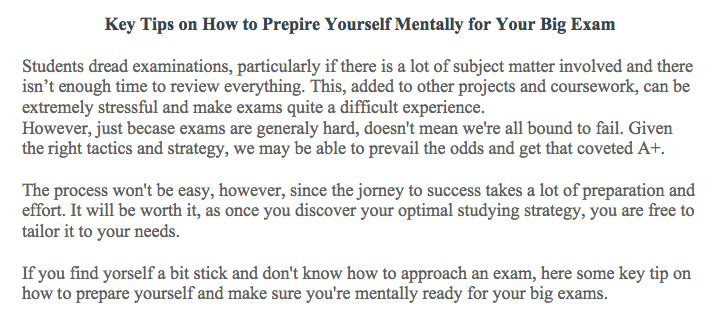
As you can see here, this isn’t written very well and it has many spelling mistakes woven into it. This is why it’s important to make sure you polish your guest post.
Formatting Mistakes
Formatting the article without subheadings, smaller paragraphs or bullet points can cause the content to seem bulky and never ending while reading. Large blocks of text can cause reader fatigue, this should be avoided at all cost.
Here’s an example of poor formatting:
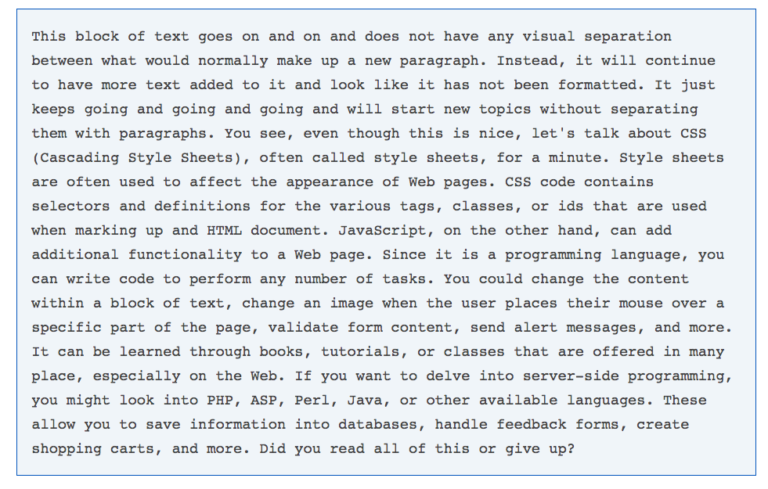
Some tips to avoid this include:
- Place a paragraph where one idea ends and a new one begins.
- For tips or listing something add numbers or bullet points to break up the content.
- If you’re moving onto a new subject, add a subheading to clearly state it’s a new subject.
This will help to break up the content so it’s easier to read. Here’s an example of the above in a better format below:
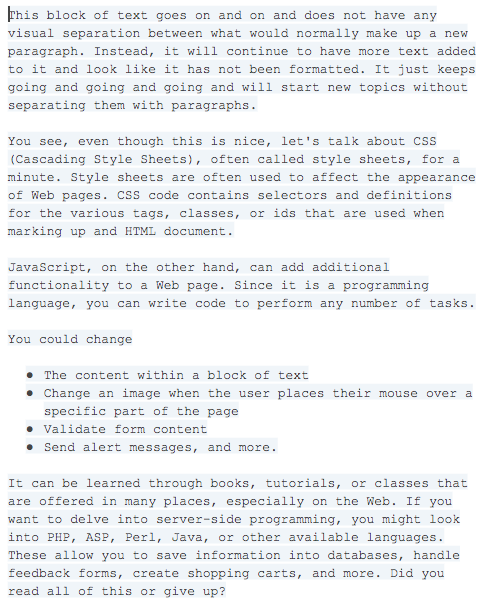
Spammy Internal Links
We all know guest posting generally helps you gain a link back to your website. While it’s ok to add one, maybe two links into the article, what’s not ok is adding a lot of links to the point it’s spammy when someone reads it. Avoid this as much as possible. If you see this example below it contains six different links.
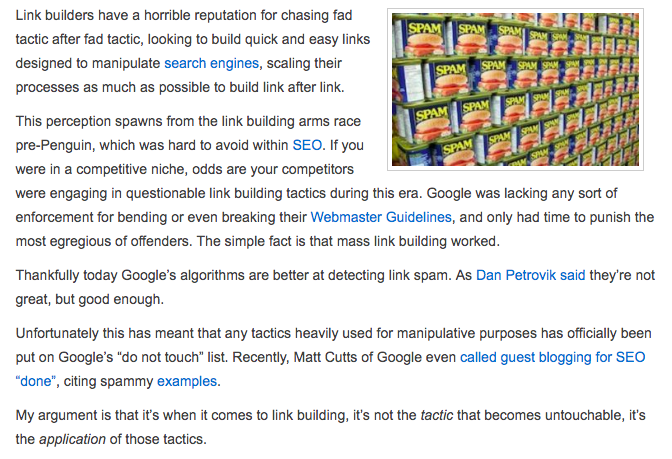
To avoid this simply:
- Choose one or two links that offer value for those who click on them.
- Choose anchors which support your links.
- Space your links a few paragraphs apart to make it look more natural.
Too many links in an article can come across as advertising which can put a poor taste in the mouths of your readers.
Uninteresting, Poor Quality Images
Visual appeal is just as important as the content itself, you need to make sure any content you write has some sort of visual aspect to it. Use images which are vibrant, colourful, interesting, and copyright free. They should be relevant to your post and what it’s talking about.
This is an example of a poor quality image below, because it’s blurry, it doesn’t offer clear focus, and because it’s not in line with the rest of the content in terms of formatting. You’ll see the image is positioned above the title instead of being in line with it.

This is also another example of a poor quality image because it’s boring to look at.

Here’s an example of a good blog post image because it’s unique to what the content is about.
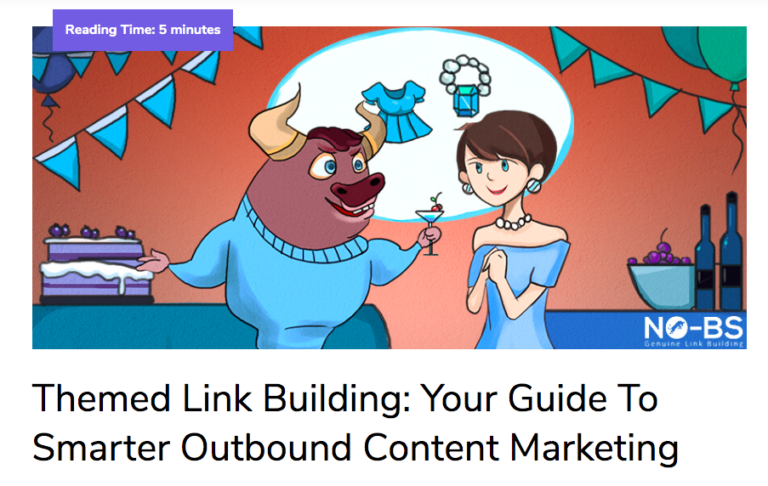
Here’s another one that’s a good example
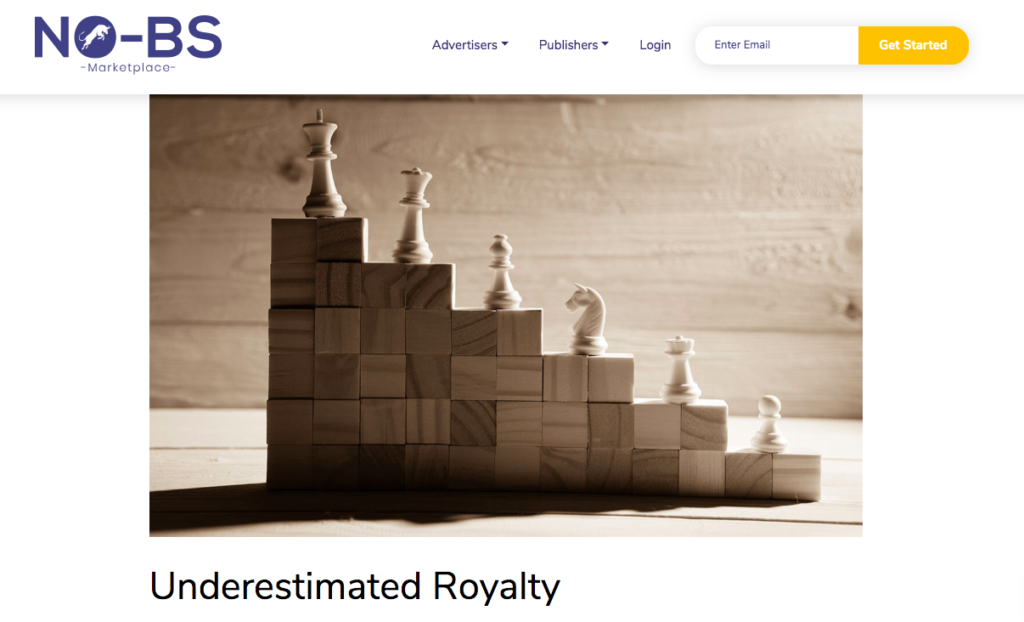
The reason why these images are good examples of quality images is because they not only offer image clarity but also offer a play on words with the title of the articles: Underestimated Royalty and Themed Link Building. For Underestimated Royalty, if you look, the king and queen are at the top signifying royalty. For Themed Link Building, you’ll see the characters at a themed party.
When choosing good images look for these traits:
- Clear clarity which allows high definition of the image.
- Choose an interesting theme within the image that offers a play on words.
- Use images which have action sequences in them like a party or running.
- Use images that offer a good light and dark shadow contrast.
Image quality is everything when you want to enhance your guest post, just make sure the images you use are copyright free.
Poor Title Creation
Title creation is key to gain the publishers interest, along with the website viewers. If a title is poorly written, doesn’t make sense, or is vague it’s going to increase the risk of people not clicking and reading it.
Here’s an example of a poorly presented title:

So what’s wrong with this one you may ask? Let’s take a closer look
- It’s way too long. It’s more like a sentence than an actual title.
- It’s not formatted very well. Ideally the first letter of each work could be capitalised.
Here’s an example of a better title:

As you can see with this one it’s:
- Shorter and more to the point with what the article will be about.
- Formatting is done well and makes it look more professional.
Always make sure your titles are professional and well written to help grab people’s attention and to make your guest post look more appealing to the publisher.
Conclusion
It’s interesting to see how all these factors can play a major part in how content quality is affected. It’s also interesting to see how content quality can affect you overall brand or website as a whole. No matter the reason behind your guest posting campaign, it’s important to remember that the content is just as important as the link. Do you feel as if you’re content is up to scratch?
